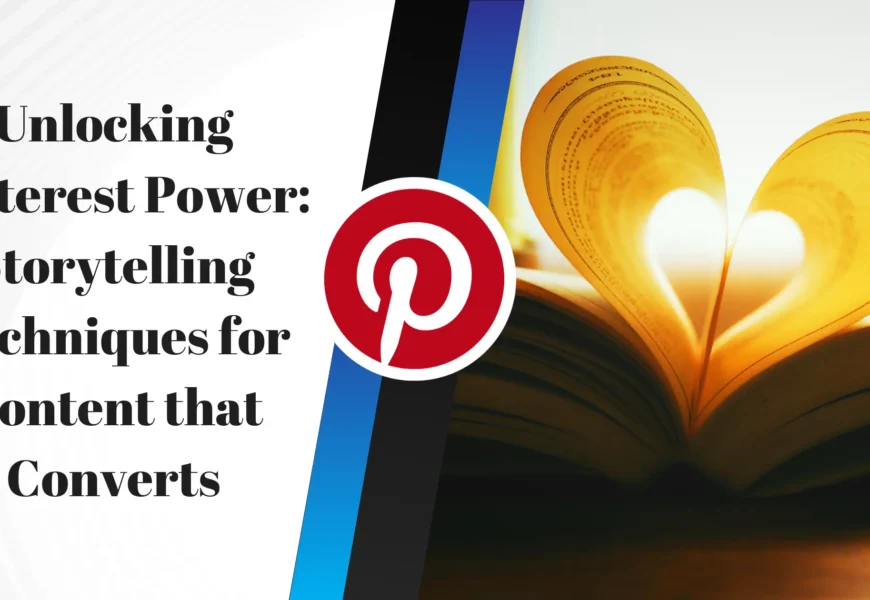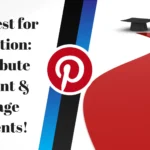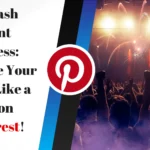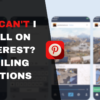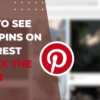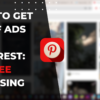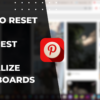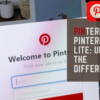Unlocking Pinterest Power: Storytelling Techniques for Content that Converts
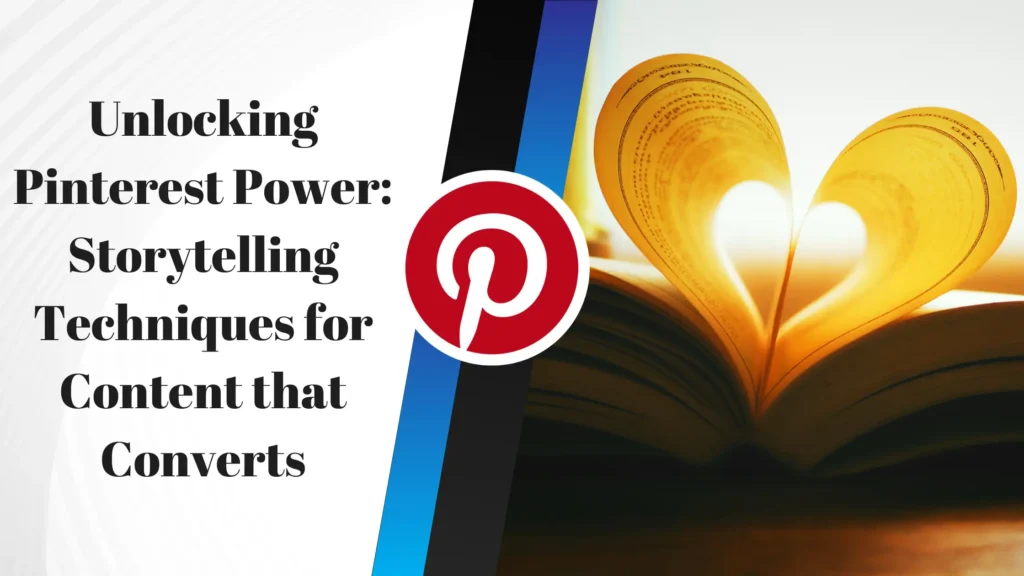
Want to make your Pinterest content truly shine? It’s not just about pretty pictures. It’s about telling a story. People connect with stories. They remember them. And most importantly, stories inspire action. Let’s dive into how you can use storytelling techniques to create Pinterest content that converts viewers into loyal followers and paying customers.
Why Storytelling Matters on Pinterest
Think of Pinterest as a visual library of dreams and aspirations. People are there to discover new ideas, plan projects, and find inspiration. A simple image might catch their eye, but a story will capture their heart. Storytelling humanizes your brand. It builds trust. It makes your content relatable. Are you just selling a product, or are you selling a solution, a lifestyle, a feeling? That’s the power of storytelling.
Have you ever scrolled through Pinterest and felt instantly drawn to a pin? Chances are, that pin wasn’t just visually appealing. It evoked a feeling, hinted at a journey, or promised a transformation. That’s storytelling in action. And it’s how you stand out from the endless scroll of images. It’s more than just a picture; it’s a glimpse into a world that resonates with the viewer.
Storytelling Techniques for Pinterest Success
1. The “Problem-Solution” Story
This is a classic for a reason! Identify a common problem your target audience faces. Then, present your product or service as the solution. Think of it like this: “Struggling to organize your pantry? Our new storage containers will transform your kitchen into an organized haven!”
For example, a skincare brand could show a before-and-after photo highlighting the transformation after using their products to combat acne. The “before” picture represents the problem, and the “after” picture showcases the solution. It’s a simple yet powerful way to connect with viewers who are struggling with similar issues. And the story, in this case, is the journey from struggle to solution.
2. The “Behind-the-Scenes” Story
People love to see the human side of a brand. Show them how your products are made, introduce your team, or share your company’s values. This builds transparency and trust. It’s like inviting your audience backstage to see the magic happen. It makes them feel like they’re part of something bigger.
Imagine a small bakery showcasing the process of making their signature sourdough bread. A short video showing the baker kneading the dough, the bread rising in a warm oven, and finally, the golden-brown loaf being sliced – that’s a behind-the-scenes story. It emphasizes the care and craft that goes into their product, making it more appealing than mass-produced alternatives. It creates a connection with viewers who appreciate artisanal quality.
3. The “Customer Success” Story
Let your customers do the talking! Share testimonials, reviews, or case studies. Highlight how your product or service has helped them achieve their goals. This is powerful social proof. It’s like hearing a recommendation from a friend. It’s much more persuasive than anything you could say about yourself.
A fitness coach could share a client’s transformation story, complete with before-and-after photos and a quote about how the coach’s program helped them achieve their weight loss goals. This showcases the tangible results of the program. When potential clients see the success of others, they are more likely to believe in the coach’s ability to help them too. It’s real-life proof that your product or service delivers on its promises.
4. The “Inspirational” Story
Tap into your audience’s emotions and aspirations. Share stories that motivate, encourage, or uplift them. This creates a positive association with your brand. Think about Nike. They don’t just sell shoes; they sell the idea of athletic achievement and pushing your limits. It’s about more than just the product; it’s about the feeling it evokes.
A travel company might share the story of a solo female traveler who overcame her fears and explored a new country. This inspires others to step outside their comfort zones and pursue their travel dreams. The story isn’t directly about the company’s tours, but it aligns with their brand values of adventure and empowerment. It resonates with a specific audience and creates a positive emotional connection.
5. The “Educational” Story
Teach your audience something new and valuable. Share tips, tutorials, or how-to guides related to your product or service. This positions you as an expert and builds trust. Think of it as giving away valuable information for free. It establishes you as a go-to resource in your industry.
A gardening supply store could create a series of Pinterest pins that teach viewers how to grow their own herbs. Each pin could focus on a different herb, providing tips on planting, watering, and harvesting. This provides value to the audience, even if they don’t immediately purchase anything. It positions the store as a knowledgeable resource, increasing the likelihood that viewers will turn to them when they need gardening supplies.
Optimizing Your Pinterest Stories for Conversion
Great stories are only half the battle. You also need to optimize your pins to drive traffic and conversions. Here’s how:
- Compelling Visuals: Use high-quality images and videos that capture attention. Make sure they are visually appealing and relevant to your story. Think of your visuals as the gateway to your story.
- Strong Headlines: Write headlines that are clear, concise, and intriguing. Use keywords that your target audience is searching for. Your headline is your first (and sometimes only) chance to grab someone’s attention.
- Detailed Descriptions: Expand on your story in the pin description. Include relevant keywords, a call to action, and a link to your website or product page. Tell people what you want them to do next.
- Relevant Keywords: Use keywords throughout your pin title, description, and board names. This helps Pinterest understand what your content is about and show it to the right audience. Think of keywords as breadcrumbs that lead people to your content.
- Call to Action: Tell people what you want them to do! Use clear and concise calls to action like “Shop Now,” “Learn More,” or “Download Free Guide.” Don’t leave people wondering what to do next.
Don’t forget to use eye-catching visuals! The visual aspect of Pinterest is critical. Think about using templates to keep your brand consistent. A clear, well-designed pin will always outperform a blurry or cluttered one. Consistency helps people recognize your brand and build trust.
Examples of Storytelling on Pinterest
Let’s look at some real-world examples of brands using storytelling effectively on Pinterest:
- Food Blogger: Shares recipes alongside personal stories about family meals and cooking traditions. It’s not just about the food; it’s about the memories and emotions associated with it.
- Fashion Brand: Creates mood boards that showcase different style aesthetics and the stories behind them. Each mood board tells a visual story about a particular lifestyle or persona.
- DIY Company: Posts tutorials and project ideas that empower viewers to create their own unique items. It’s about more than just the finished product; it’s about the sense of accomplishment and creativity.
Notice how each of these examples goes beyond simply showcasing products. They weave a narrative that resonates with their target audience, making their content more engaging and memorable. They are building a community around their brand by sharing their stories and values.
Measuring Your Storytelling Success
How do you know if your storytelling efforts are paying off? Track your Pinterest analytics! Look at metrics like:
- Pin Impressions: How many times your pins were seen.
- Pin Clicks: How many times people clicked on your pins.
- Save Rate: How many times people saved your pins to their boards. This is a good indicator of engagement.
- Website Traffic: How much traffic your Pinterest pins are driving to your website.
- Conversion Rate: The percentage of people who take a desired action (e.g., purchase a product, sign up for an email list) after clicking on your pins.
Analyze your data to see which types of stories are performing best. Adapt your strategy based on what resonates with your audience. It’s a continuous process of testing and refining your storytelling approach. The goal is to create content that not only attracts attention but also drives meaningful results for your business.
Final Thoughts
Storytelling is a powerful tool for unlocking the full potential of Pinterest. By crafting compelling narratives, optimizing your pins, and tracking your results, you can create content that not only captures attention but also drives conversions. So, start thinking like a storyteller and transform your Pinterest presence today! It’s time to stop just posting pictures and start sharing stories that connect with your audience on a deeper level.

